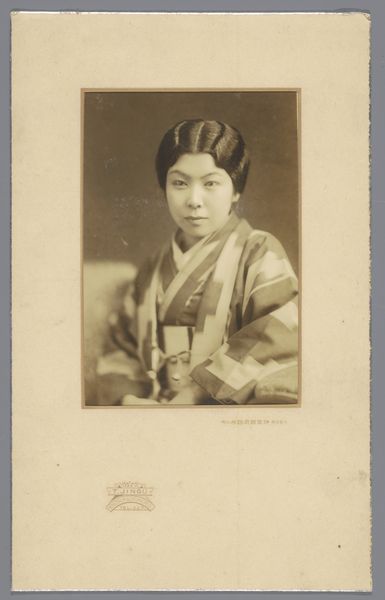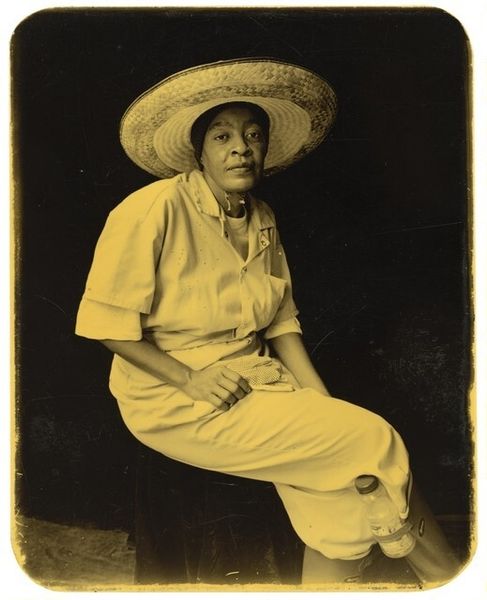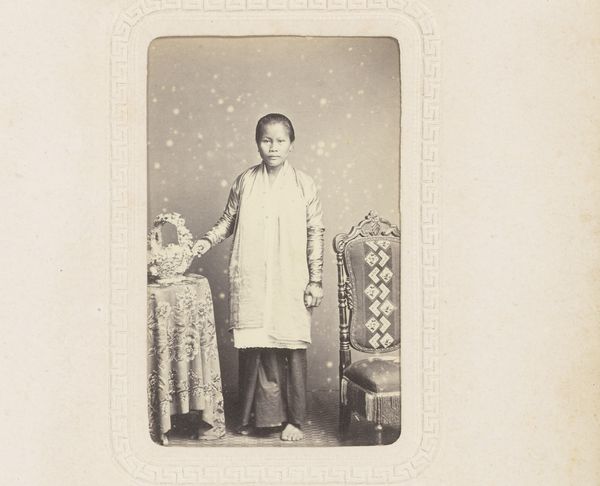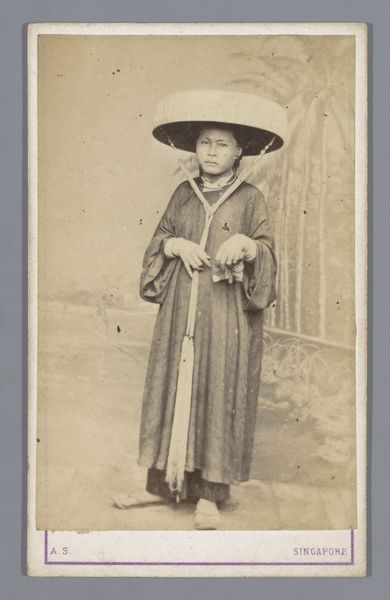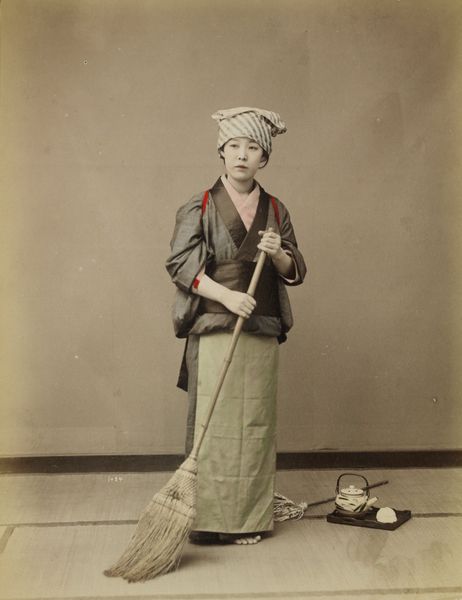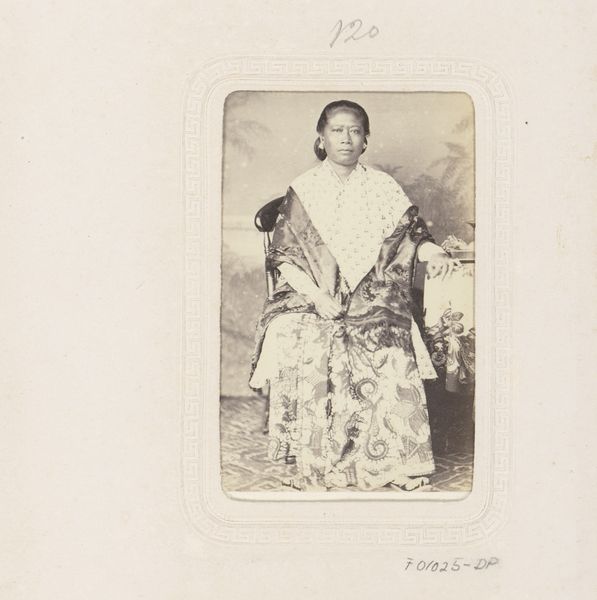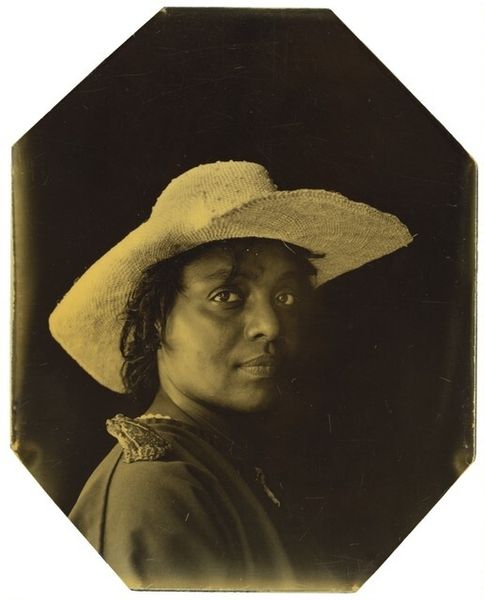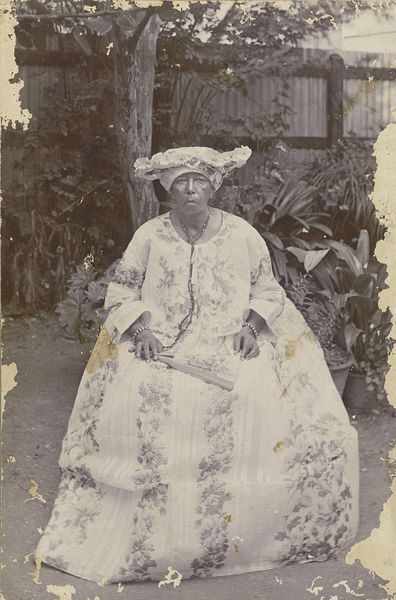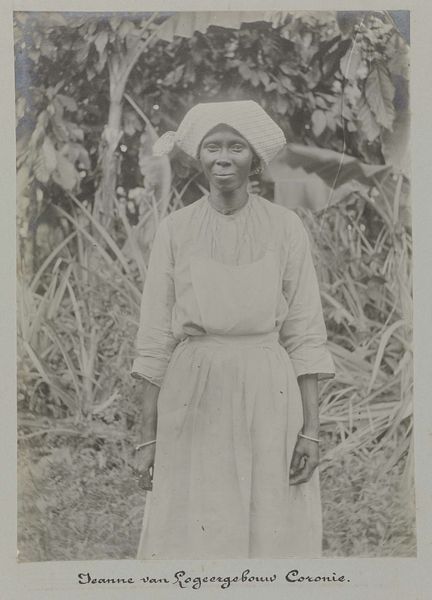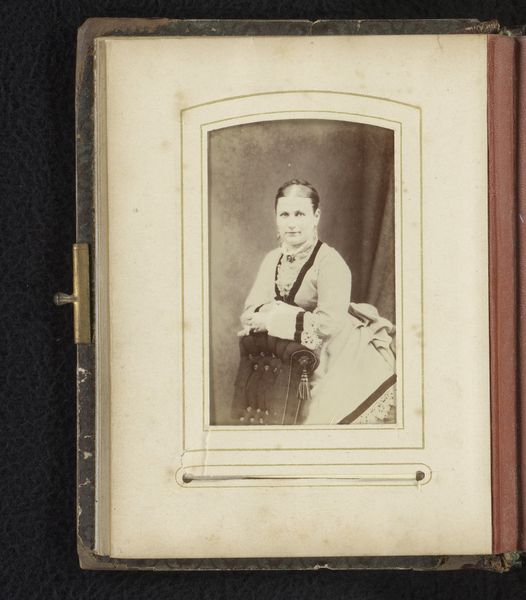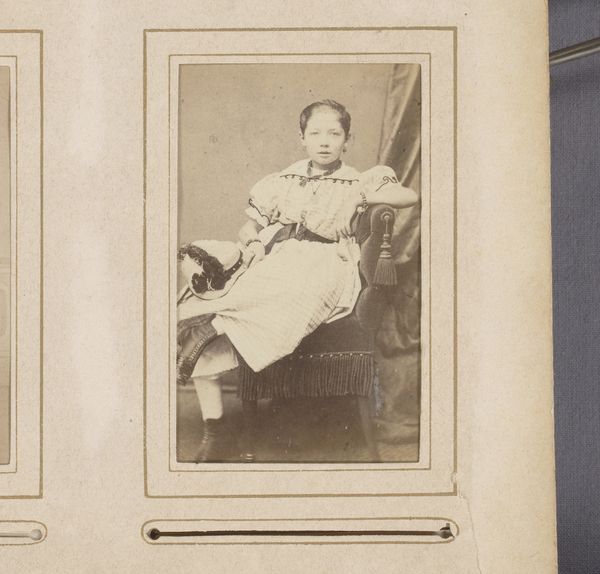
Dimensions: Image: 9.6 x 6.8 cm (3 3/4 x 2 11/16 in.) Case: 1.3 x 11.1 x 8.3 cm (1/2 x 4 3/8 x 3 1/4 in.)
Copyright: Public Domain
Editor: Here we have Fujita's "Kenji Morita," an albumen print dating back to 1886. It's a framed portrait, and I'm immediately struck by the subject’s direct gaze. What do you see when you look at this photograph? Curator: I see a young person navigating a complex cultural landscape. The albumen print process itself signifies a particular moment of Western influence on Japanese portraiture. How does it differ from traditional Ukiyo-e portraits, for example? Think about the role of photography in constructing and circulating images of non-Western individuals during that period. Editor: So, you're saying the medium itself—photography—brings a layer of colonial gaze to it? Curator: Exactly. Photography became a tool, consciously or unconsciously, of power dynamics. Also consider the sitter, Kenji Morita, within the socio-political climate of Meiji-era Japan, a time marked by rapid modernization and engagement with the West, but also a fervent drive to define national identity. To what extent did these portraits influence the western perception of Japan and its people? Editor: It makes me wonder what Kenji Morita thought about having his photo taken. There's a certain vulnerability but also dignity in their expression. Curator: Precisely. Those tensions – between vulnerability, agency, cultural performance and photographic documentation, can provide valuable historical insights, leading us to re-evaluate these images within complex dialogues surrounding representation, power and identity formation. What might their descendants think about the photograph now? Editor: Thinking about it in terms of power and identity has completely changed my perspective. Curator: Mine too! It's always a process of ongoing learning, which encourages reinterpretation, understanding, and challenging existing knowledge frameworks.
Comments
No comments
Be the first to comment and join the conversation on the ultimate creative platform.
